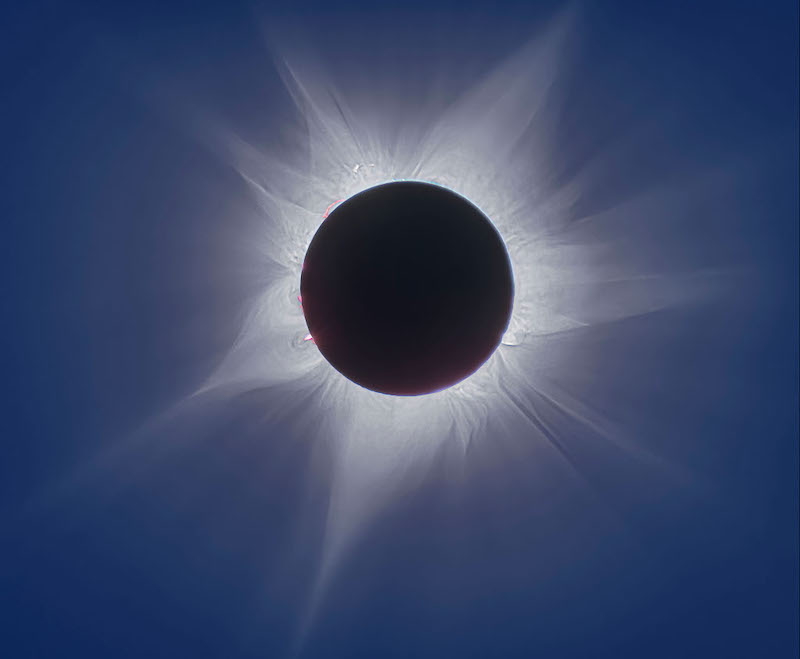
2024 will be the year of the great total solar eclipse that will sweep across North America! The eclipse will happen on April 8, 2024. Read about it here.
5 solar eclipses that changed our view of the world
For millennia, the motions of the sky compelled storytellers and mystics. The moon, in particular, became a repository for our irrational beliefs. But a solar eclipse can offer a reality check in spectacular form. Here’s a glimpse of how science progressed and changed the world during five historic eclipses.
The 2024 lunar calendars are here! Best New Year’s gifts in the universe! Check ’em out here.
The Ugarit Eclipse (1223 BCE)
One of the earliest recorded solar eclipses is the Ugarit Eclipse of 1223 BCE. The Babylonian city of Ugarit was a center of learning. Babylonians methodically studied the moon, making it one of the earliest subjects of scientific research. Their lasting contribution is the Saros cycle. A Saros cycle is approximately 6,585.321 days, and astronomers use it to predict eclipses. Based on Babylonian records, the Greeks established that similar eclipses appear in patterns every 18 1/2 years. In an era when people considered eclipses to be bad omens, it was the beginning of science.
The Thales Eclipse (585 BCE)
The Thales Eclipse of 585 BCE is famous for being the first predicted eclipse. Although in dispute, some claim that the Greek philosopher Thales of Miletus predicted the solar eclipse that was observed from a battlefield in Anatolia. The famous sci-fi writer Isaac Asimov called the eclipse prediction the “birth of science.” In addition, the Greeks deduced the moon’s influence on ocean tides. The Greeks also mainstreamed some less credible ideas, such as astrology and lunacy, which we can trace back to Ptolemy and Aristotle.
Halley’s Eclipse (1715)
Isaac Newton likely saw three eclipses during his lifetime. Halley’s Eclipse of 1715 might have been the most notable. The name Halley comes from Newton’s close friend, astronomer Edmond Halley. You probably know Edmond Halley for the comet, whose reappearance he accurately foretold. Well, Halley also correctly predicted the eclipse of 1715 to within four minutes and produced the first detailed map of totality. The moon’s orbit was trackable to a fine degree, and Newton used it to verify his theory of gravity.
The Eddington Eclipse (1919)
The Eddington Eclipse of 1919 is the purest example of an eclipse used for scientific validation. Eight years earlier, Einstein’s general theory of relativity predicted gravity would bend light. His theory was testable … during a solar eclipse, researchers could view the stars near the sun and see if they appeared slightly off from their usual positions. Traveling with bulky equipment, Arthur Eddington set out to the West African Island of Principe while a second expedition journeyed to the Brazilian town of Sobral. Both teams encountered bad weather on the day of the eclipse, but Eddington captured one photo that was clear enough to confirm the shift. The eclipse confirmed relativity and made Einstein famous.
The Eclipse of the Century (1970)
Occurring in the midst of the Apollo missions, the eclipse of 1970 has been largely forgotten. Grazing nearly the entire Eastern Seaboard of the United States, it was dubbed the Eclipse of the Century. It was the first eclipse televised in color, and also the first eclipse photographed by space satellite. It crossed directly over one of NASA’s rocket facilities, and NASA took full advantage by launching 32 suborbital rockets to study meteorology, the ionosphere and solar physics.
If our view of the moon and sky can change during a solar eclipse, then our view of the world can also change. We just need to look at the moon and be prepared to see something amazing. So, when’s the next total solar eclipse? On April 8, 2024, a total solar eclipse will cross Mexico, the United States, and Canada. Make plans to view it now!
Bottom line: Throughout history, total solar eclipses have blazed a path for science. Learn more about five solar eclipses that changed our view of the world.
The post 5 solar eclipses that changed our view of the world first appeared on EarthSky.
0 Commentaires